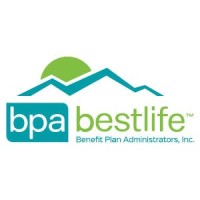
Benefit Plan Administrators, Inc. Company Cyber Security Posture
bpatpa.comBenefit Plan Administrators (BPA), Inc. has been helping employers of all sizes successfully manage their healthcare benefits since 1965. Headquartered in Roanoke, Virginia, we serve clients in public entities and private companies across the United States. As a dedicated and experienced TPA, we bring together the best solutions to help self-funded organizations get more value with their healthcare plan at a lower cost. At BPA, we believe that quality data leads to the best solutions. BPA uses a combination of leading technology and current data, coupled with experienced and conscientious staff members to address health issues before they become costly. This powerful data, predictive modeling and risk stratification allows us to deliver the best healthcare at the best value. We also believe that wellness works for our clients’ bottom line. The BPA BestLife Wellness Incentive Portal educates employees on proper disease management and provides wellness tools, guiding them towards better health and our employer clients to better health plan costs. If you’re ready for a benefits partner that you can be confident in, it’s time to partner with BPA. Visit www.bpatpa.com today to learn more.
BPAI Company Details
benefit-plan-administrators-inc-roanoke-va
42 employees
1530.0
524
Insurance
bpatpa.com
Scan still pending
BEN_2194891
In-progress
Between 900 and 1000
This score is AI-generated and less favored by cyber insurers, who prefer the TPRM score.
 BPAI Global Score
BPAI Global Score.png)

Benefit Plan Administrators, Inc. Company Scoring based on AI Models
| Model Name | Date | Description | Current Score Difference | Score |
|---|---|---|---|---|
| AVERAGE-Industry | 03-12-2025 | This score represents the average cybersecurity rating of companies already scanned within the same industry. It provides a benchmark to compare an individual company's security posture against its industry peers. | N/A | Between 900 and 1000 |
Benefit Plan Administrators, Inc. Company Cyber Security News & History
| Entity | Type | Severity | Impact | Seen | Url ID | Details | View |
|---|---|---|---|---|---|---|---|
| Benefit Plan Administrators, Inc. | Breach | 80 | 4 | 06/2022 | BEN16318722 | Link | |
Rankiteo Explanation : Attack with significant impact with customers data leaksDescription: Benefit Plan Administrators, Inc. experienced a data breach after an unauthorized party gained access to the company’s computer network. The breach compromised the full names, Social Security numbers, addresses, dates of birth, gender classification, claims information, medication information, and medical diagnosis/conditions information. Benefit Plan Administrators immediately investigated the incident and notified the impacted individuals. | |||||||
Benefit Plan Administrators, Inc. Company Subsidiaries

Benefit Plan Administrators (BPA), Inc. has been helping employers of all sizes successfully manage their healthcare benefits since 1965. Headquartered in Roanoke, Virginia, we serve clients in public entities and private companies across the United States. As a dedicated and experienced TPA, we bring together the best solutions to help self-funded organizations get more value with their healthcare plan at a lower cost. At BPA, we believe that quality data leads to the best solutions. BPA uses a combination of leading technology and current data, coupled with experienced and conscientious staff members to address health issues before they become costly. This powerful data, predictive modeling and risk stratification allows us to deliver the best healthcare at the best value. We also believe that wellness works for our clients’ bottom line. The BPA BestLife Wellness Incentive Portal educates employees on proper disease management and provides wellness tools, guiding them towards better health and our employer clients to better health plan costs. If you’re ready for a benefits partner that you can be confident in, it’s time to partner with BPA. Visit www.bpatpa.com today to learn more.
Access Data Using Our API

Get company history
.png)
BPAI Cyber Security News
Social Security Administration Clarifies Identity Proofing Requirements
The SSA extended, for two weeks, the launch of new identity-proofing requirements and made an exception for those applying for certain ...
Social Security Administration outlines new plan for stricter ID-proofing options
SSA will eliminate an option for individuals to verify their identity over the phone to receive retirement benefits or request direct deposit ...
What is DOGE doing to Social Security?
DOGE announced plans to cut Social Security staff by 7,000 workers—12% of the workforce. The Trump administration also plans to shutter or ...
The Social Security Administration says it plans to cut some 7,000 jobs
The planned job cuts are raising concerns about staffing at the agency that disburses retirement benefits, as well as disability and survivor ...
Trump Administration, DOGE Activities Risk SSA Operations and Security of Personal Data
Trump Administration Politicizing Social Security Administration Will Further Undermine Benefits · Nearly 2 Million More People Will Need to ...
Pennsylvania Insurance Department
The Pennsylvania Insurance Department protects and assists consumers, licenses insurance professionals and companies, and regulates the insurance marketplace.
Fixing Social Security
Wendell Primus, Tara Watson, and Jack Smalligan outline a roadmap for strengthening and restoring solvency to the Social Security program.
Biden administration proposes new cybersecurity rules to limit impact of healthcare data leaks
The proposals include encrypting data so it cannot be accessed, even if leaked, and requiring compliance checks to ensure networks meet ...
Social Security has never missed a payment. DOGE actions threaten 'interruption of benefits,' ex-agency head says
Social Security has never missed a payment. DOGE actions threaten 'interruption of benefits,' ex-agency head says. Published Sat, Mar 1 20259: ...

BPAI Similar Companies

AG2R LA MONDIALE
Acteur majeur de l’assurance de la personne présent sur tous les territoires, AG2R LA MONDIALE assure les particuliers, les entreprises et les branches professionnelles, dans une approche à la fois individuelle et collective. Nous apportons à chacun de nos clients et à leurs familles, des solution

SOGAZ
SOGAZ is the largest universal insurance group in the Russian Federation. We offer more than 100 insurance programs covering all kinds of property, personal and liability insurance. We see our main goal in minimizing risks for companies and assisting in building most efficient and successful busine
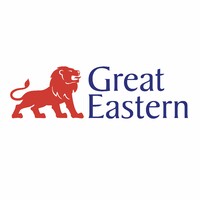
GREAT EASTERN
Established in 1908, Great Eastern places customers at the heart of everything we do. Our legacy extends beyond our products and services to our culture, which is defined by our core values and how we work. As champions of Integrity, Initiative and Involvement, our core values act as a compass, guid
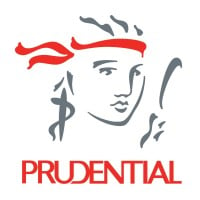
Prudential Indonesia (PT Prudential Life Assurance)
Listening. Understanding. Delivering. At Prudential Indonesia we deliver excellence by consistently innovating, creating new opportunities and growing our business to cater all of our customers' needs. With a vision of becoming truly world class, Prudential Indonesia provides quality services and
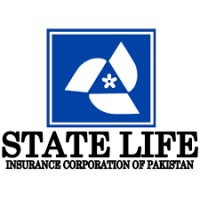
State Life Insurance Pakistan
The Life Insurance Business in Pakistan was nationalized in March 1972. Initially, the Life Insurance business of 32 Insurance Companies was merged and placed under three Beema Units named “A”, “B” and “C” Beema Units. However, later these Beema Units were merged, and effective November 1, 1972, the
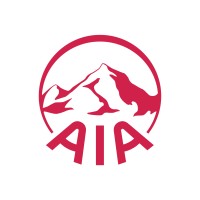
AIA
AIA Group Limited and its subsidiaries (collectively “AIA” or the “Group”) comprise the largest independent publicly listed pan-Asian life insurance group. It has a presence in 18 markets – wholly-owned branches and subsidiaries in Mainland China, Hong Kong SAR(1), Thailand, Singapore, Malaysia, Aus

Frequently Asked Questions (FAQ) on Cybersecurity Incidents
BPAI CyberSecurity History Information
Total Incidents: According to Rankiteo, BPAI has faced 1 incidents in the past.
Incident Types: The types of cybersecurity incidents that have occurred include ['Breach'].
Total Financial Loss: The total financial loss from these incidents is estimated to be {total_financial_loss}.
Cybersecurity Posture: The company's overall cybersecurity posture is described as Benefit Plan Administrators (BPA), Inc. has been helping employers of all sizes successfully manage their healthcare benefits since 1965. Headquartered in Roanoke, Virginia, we serve clients in public entities and private companies across the United States. As a dedicated and experienced TPA, we bring together the best solutions to help self-funded organizations get more value with their healthcare plan at a lower cost. At BPA, we believe that quality data leads to the best solutions. BPA uses a combination of leading technology and current data, coupled with experienced and conscientious staff members to address health issues before they become costly. This powerful data, predictive modeling and risk stratification allows us to deliver the best healthcare at the best value. We also believe that wellness works for our clients’ bottom line. The BPA BestLife Wellness Incentive Portal educates employees on proper disease management and provides wellness tools, guiding them towards better health and our employer clients to better health plan costs. If you’re ready for a benefits partner that you can be confident in, it’s time to partner with BPA. Visit www.bpatpa.com today to learn more..
Detection and Response: The company detects and responds to cybersecurity incidents through {description_of_detection_and_response_process}.
Incident Details
Incident 1: Ransomware Attack
Title: {Incident_Title}
Description: {Brief_description_of_the_incident}
Date Detected: {Detection_Date}
Date Publicly Disclosed: {Disclosure_Date}
Date Resolved: {Resolution_Date}
Type: {Type_of_Attack}
Attack Vector: {Attack_Vector}
Vulnerability Exploited: {Vulnerability}
Threat Actor: {Threat_Actor}
Motivation: {Motivation}
Incident 2: Data Breach
Title: {Incident_Title}
Description: {Brief_description_of_the_incident}
Date Detected: {Detection_Date}
Date Publicly Disclosed: {Disclosure_Date}
Date Resolved: {Resolution_Date}
Type: {Type_of_Attack}
Attack Vector: {Attack_Vector}
Vulnerability Exploited: {Vulnerability}
Threat Actor: {Threat_Actor}
Motivation: {Motivation}
Common Attack Types: As of now, the company has not encountered any reported incidents involving common cyberattacks.
Identification of Attack Vectors: The company identifies the attack vectors used in incidents through {description_of_identification_process}.
Impact of the Incidents
Incident 1: Ransomware Attack
Financial Loss: {Financial_Loss}
Data Compromised: {Data_Compromised}
Systems Affected: {Systems_Affected}
Downtime: {Downtime}
Operational Impact: {Operational_Impact}
Conversion Rate Impact: {Conversion_Rate_Impact}
Revenue Loss: {Revenue_Loss}
Customer Complaints: {Customer_Complaints}
Brand Reputation Impact: {Brand_Reputation_Impact}
Legal Liabilities: {Legal_Liabilities}
Identity Theft Risk: {Identity_Theft_Risk}
Payment Information Risk: {Payment_Information_Risk}
Incident 2: Data Breach
Financial Loss: {Financial_Loss}
Data Compromised: {Data_Compromised}
Systems Affected: {Systems_Affected}
Downtime: {Downtime}
Operational Impact: {Operational_Impact}
Conversion Rate Impact: {Conversion_Rate_Impact}
Revenue Loss: {Revenue_Loss}
Customer Complaints: {Customer_Complaints}
Brand Reputation Impact: {Brand_Reputation_Impact}
Legal Liabilities: {Legal_Liabilities}
Identity Theft Risk: {Identity_Theft_Risk}
Payment Information Risk: {Payment_Information_Risk}
Average Financial Loss: The average financial loss per incident is {average_financial_loss}.
Commonly Compromised Data Types: The types of data most commonly compromised in incidents are {list_of_commonly_compromised_data_types}.
Incident 1: Ransomware Attack
Entity Name: {Entity_Name}
Entity Type: {Entity_Type}
Industry: {Industry}
Location: {Location}
Size: {Size}
Customers Affected: {Customers_Affected}
Incident 2: Data Breach
Entity Name: {Entity_Name}
Entity Type: {Entity_Type}
Industry: {Industry}
Location: {Location}
Size: {Size}
Customers Affected: {Customers_Affected}
Response to the Incidents
Incident 1: Ransomware Attack
Incident Response Plan Activated: {Yes/No}
Third Party Assistance: {Yes/No}
Law Enforcement Notified: {Yes/No}
Containment Measures: {Containment_Measures}
Remediation Measures: {Remediation_Measures}
Recovery Measures: {Recovery_Measures}
Communication Strategy: {Communication_Strategy}
Adaptive Behavioral WAF: {Adaptive_Behavioral_WAF}
On-Demand Scrubbing Services: {On_Demand_Scrubbing_Services}
Network Segmentation: {Network_Segmentation}
Enhanced Monitoring: {Enhanced_Monitoring}
Incident 2: Data Breach
Incident Response Plan Activated: {Yes/No}
Third Party Assistance: {Yes/No}
Law Enforcement Notified: {Yes/No}
Containment Measures: {Containment_Measures}
Remediation Measures: {Remediation_Measures}
Recovery Measures: {Recovery_Measures}
Communication Strategy: {Communication_Strategy}
Adaptive Behavioral WAF: {Adaptive_Behavioral_WAF}
On-Demand Scrubbing Services: {On_Demand_Scrubbing_Services}
Network Segmentation: {Network_Segmentation}
Enhanced Monitoring: {Enhanced_Monitoring}
Incident Response Plan: The company's incident response plan is described as {description_of_incident_response_plan}.
Third-Party Assistance: The company involves third-party assistance in incident response through {description_of_third_party_involvement}.
Data Breach Information
Incident 2: Data Breach
Type of Data Compromised: {Type_of_Data}
Number of Records Exposed: {Number_of_Records}
Sensitivity of Data: {Sensitivity_of_Data}
Data Exfiltration: {Yes/No}
Data Encryption: {Yes/No}
File Types Exposed: {File_Types}
Personally Identifiable Information: {Yes/No}
Prevention of Data Exfiltration: The company takes the following measures to prevent data exfiltration: {description_of_prevention_measures}.
Handling of PII Incidents: The company handles incidents involving personally identifiable information (PII) through {description_of_handling_process}.
Ransomware Information
Incident 1: Ransomware Attack
Ransom Demanded: {Ransom_Amount}
Ransom Paid: {Ransom_Paid}
Ransomware Strain: {Ransomware_Strain}
Data Encryption: {Yes/No}
Data Exfiltration: {Yes/No}
Ransom Payment Policy: The company's policy on paying ransoms in ransomware incidents is described as {description_of_ransom_payment_policy}.
Data Recovery from Ransomware: The company recovers data encrypted by ransomware through {description_of_data_recovery_process}.
Regulatory Compliance
Incident 1: Ransomware Attack
Regulations Violated: {Regulations_Violated}
Fines Imposed: {Fines_Imposed}
Legal Actions: {Legal_Actions}
Regulatory Notifications: {Regulatory_Notifications}
Incident 2: Data Breach
Regulations Violated: {Regulations_Violated}
Fines Imposed: {Fines_Imposed}
Legal Actions: {Legal_Actions}
Regulatory Notifications: {Regulatory_Notifications}
Regulatory Frameworks: The company complies with the following regulatory frameworks regarding cybersecurity: {list_of_regulatory_frameworks}.
Ensuring Regulatory Compliance: The company ensures compliance with regulatory requirements through {description_of_compliance_measures}.
Lessons Learned and Recommendations
Incident 1: Ransomware Attack
Lessons Learned: {Lessons_Learned}
Incident 2: Data Breach
Lessons Learned: {Lessons_Learned}
Incident 1: Ransomware Attack
Recommendations: {Recommendations}
Incident 2: Data Breach
Recommendations: {Recommendations}
Key Lessons Learned: The key lessons learned from past incidents are {list_of_key_lessons_learned}.
Implemented Recommendations: The company has implemented the following recommendations to improve cybersecurity: {list_of_implemented_recommendations}.
References
Additional Resources: Stakeholders can find additional resources on cybersecurity best practices at {list_of_additional_resources}.
Investigation Status
Incident 1: Ransomware Attack
Investigation Status: {Investigation_Status}
Incident 2: Data Breach
Investigation Status: {Investigation_Status}
Communication of Investigation Status: The company communicates the status of incident investigations to stakeholders through {description_of_communication_process}.
Stakeholder and Customer Advisories
Incident 1: Ransomware Attack
Stakeholder Advisories: {Stakeholder_Advisories}
Customer Advisories: {Customer_Advisories}
Incident 2: Data Breach
Stakeholder Advisories: {Stakeholder_Advisories}
Customer Advisories: {Customer_Advisories}
Advisories Provided: The company provides the following advisories to stakeholders and customers following an incident: {description_of_advisories_provided}.
Initial Access Broker
Incident 1: Ransomware Attack
Entry Point: {Entry_Point}
Reconnaissance Period: {Reconnaissance_Period}
Backdoors Established: {Backdoors_Established}
High Value Targets: {High_Value_Targets}
Data Sold on Dark Web: {Yes/No}
Incident 2: Data Breach
Entry Point: {Entry_Point}
Reconnaissance Period: {Reconnaissance_Period}
Backdoors Established: {Backdoors_Established}
High Value Targets: {High_Value_Targets}
Data Sold on Dark Web: {Yes/No}
Monitoring and Mitigation of Initial Access Brokers: The company monitors and mitigates the activities of initial access brokers through {description_of_monitoring_and_mitigation_measures}.
Post-Incident Analysis
Incident 1: Ransomware Attack
Root Causes: {Root_Causes}
Corrective Actions: {Corrective_Actions}
Incident 2: Data Breach
Root Causes: {Root_Causes}
Corrective Actions: {Corrective_Actions}
Post-Incident Analysis Process: The company's process for conducting post-incident analysis is described as {description_of_post_incident_analysis_process}.
Corrective Actions Taken: The company has taken the following corrective actions based on post-incident analysis: {list_of_corrective_actions_taken}.
Additional Questions
General Information
Ransom Payment History: The company has {paid/not_paid} ransoms in the past.
Last Ransom Demanded: The amount of the last ransom demanded was {last_ransom_amount}.
Last Attacking Group: The attacking group in the last incident was {last_attacking_group}.
Incident Details
Most Recent Incident Detected: The most recent incident detected was on {most_recent_incident_detected_date}.
Most Recent Incident Publicly Disclosed: The most recent incident publicly disclosed was on {most_recent_incident_publicly_disclosed_date}.
Most Recent Incident Resolved: The most recent incident resolved was on {most_recent_incident_resolved_date}.
Impact of the Incidents
Highest Financial Loss: The highest financial loss from an incident was {highest_financial_loss}.
Most Significant Data Compromised: The most significant data compromised in an incident was {most_significant_data_compromised}.
Most Significant System Affected: The most significant system affected in an incident was {most_significant_system_affected}.
Response to the Incidents
Third-Party Assistance in Most Recent Incident: The third-party assistance involved in the most recent incident was {third_party_assistance_in_most_recent_incident}.
Containment Measures in Most Recent Incident: The containment measures taken in the most recent incident were {containment_measures_in_most_recent_incident}.
Data Breach Information
Most Sensitive Data Compromised: The most sensitive data compromised in a breach was {most_sensitive_data_compromised}.
Number of Records Exposed: The number of records exposed in the most significant breach was {number_of_records_exposed}.
Ransomware Information
Highest Ransom Demanded: The highest ransom demanded in a ransomware incident was {highest_ransom_demanded}.
Highest Ransom Paid: The highest ransom paid in a ransomware incident was {highest_ransom_paid}.
Regulatory Compliance
Highest Fine Imposed: The highest fine imposed for a regulatory violation was {highest_fine_imposed}.
Most Significant Legal Action: The most significant legal action taken for a regulatory violation was {most_significant_legal_action}.
Lessons Learned and Recommendations
Most Significant Lesson Learned: The most significant lesson learned from past incidents was {most_significant_lesson_learned}.
Most Significant Recommendation Implemented: The most significant recommendation implemented to improve cybersecurity was {most_significant_recommendation_implemented}.
References
Most Recent Source: The most recent source of information about an incident is {most_recent_source}.
Most Recent URL for Additional Resources: The most recent URL for additional resources on cybersecurity best practices is {most_recent_url}.
Investigation Status
Current Status of Most Recent Investigation: The current status of the most recent investigation is {current_status_of_most_recent_investigation}.
Stakeholder and Customer Advisories
Most Recent Stakeholder Advisory: The most recent stakeholder advisory issued was {most_recent_stakeholder_advisory}.
Most Recent Customer Advisory: The most recent customer advisory issued was {most_recent_customer_advisory}.
Initial Access Broker
Most Recent Entry Point: The most recent entry point used by an initial access broker was {most_recent_entry_point}.
Most Recent Reconnaissance Period: The most recent reconnaissance period for an incident was {most_recent_reconnaissance_period}.
Post-Incident Analysis
Most Significant Root Cause: The most significant root cause identified in post-incident analysis was {most_significant_root_cause}.
Most Significant Corrective Action: The most significant corrective action taken based on post-incident analysis was {most_significant_corrective_action}.
What Do We Measure?
















Every week, Rankiteo analyzes billions of signals to give organizations a sharper, faster view of emerging risks. With deeper, more actionable intelligence at their fingertips, security teams can outpace threat actors, respond instantly to Zero-Day attacks, and dramatically shrink their risk exposure window.
These are some of the factors we use to calculate the overall score:
Identify exposed access points, detect misconfigured SSL certificates, and uncover vulnerabilities across the network infrastructure.
Gain visibility into the software components used within an organization to detect vulnerabilities, manage risk, and ensure supply chain security.
Monitor and manage all IT assets and their configurations to ensure accurate, real-time visibility across the company's technology environment.
Leverage real-time insights on active threats, malware campaigns, and emerging vulnerabilities to proactively defend against evolving cyberattacks.




